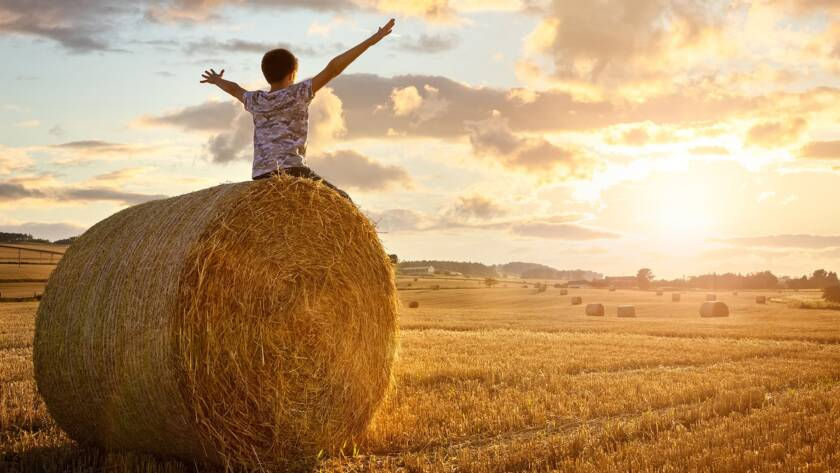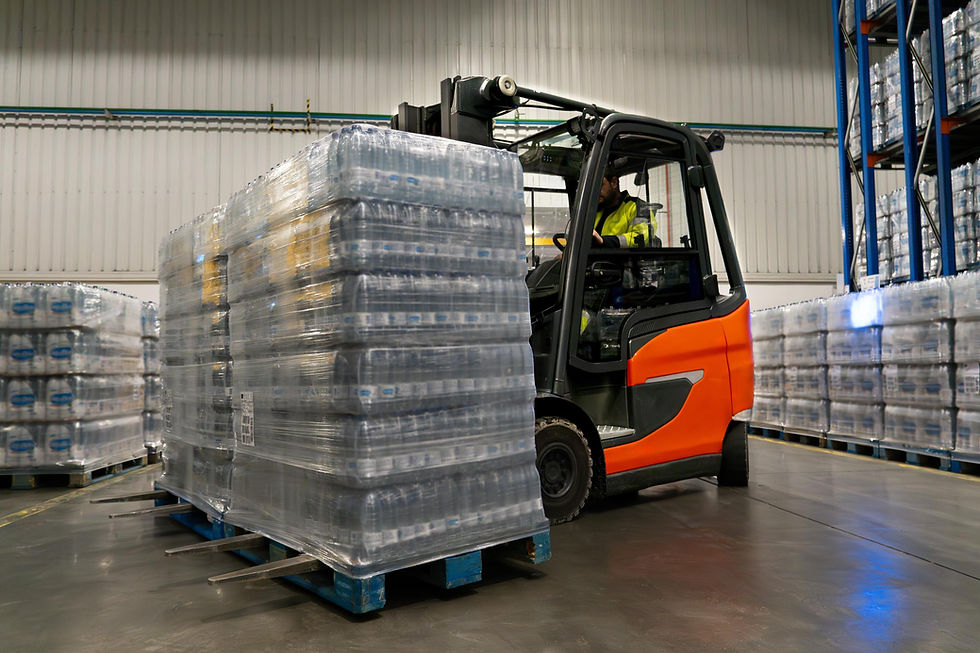Mold Can Ruin an Entire Crop of Hay
- MMP Corporation

- Jul 22
- 3 min read
Updated: Oct 7

All the time and effort used to cultivate a crop of hay can be wasted if proper precautions are not followed at harvest time and your hay turns moldy.

The Problems of Mold in Baled and Wrapped Hay
The ideal hay crop should contain maximum energy and protein to be easily digestible. Baled and wrapped hay undergoes a beneficial fermentation process two weeks or so after wrapping, while the hay still contains a relatively high level of moisture content. After the fermentation process is complete, the hay is referred to as silage.
The fermentation process allows microbes to feed off the sugars in the hay and exude organic acids that boost the hay's nutritional value. However, if the moisture content is too high, mold in the form of mycotoxins can invade the hay, disrupt the fermentation process, and decrease the hay's value until the mycotoxins render the hay worthless as a food source.
The Consequence of Mold Growth
Moldy hay is worthless as livestock feed. It can cause neurologic disorders, liver and kidney damage, and estrogenic effects in livestock, which can affect the animal's ability to reproduce. Mold's mycotoxins can also carry disease-causing agents that have been associated with the deaths of young calves, mature cattle, and spontaneous abortions.
Farmers learn to stay aware of the weather around harvest time as it can dictate the right time to harvest and bale wrap the crop to keep the moisture at an acceptable level and allow the fermentation process to occur. Wrapping the hay in plastic is typically done within a few hours of harvesting. A suitable window of time is needed where the moisture content of the hay is low enough to keep the hay from molding when stored, yet high enough to allow fermentation. This timing issue can determine the viability of the entire crop. Hay that’s susceptible to mold includes:
Hay that naturally has a high moisture content and must be dried longer
Hay that has been rained on before baling
Hay that has been stored incorrectly after wrapping
Avoiding each of these conditions is crucial in preserving your crop and the health of your livestock.

Determining the Ideal Time to Harvest and Wrap Hay Bales
Hay must not be harvested too soon after the last rains. It needs to dry out enough to attain a low enough moisture level to keep the hay from molding after it is baled, wrapped, and stored. An acceptable moisture level for baling and wrapping hay is 15%.
Wrap Your Hay Properly
It's recommended that you wrap your baled hay in at least six layers of tensioned wrap. This will ensure the bale is wrapped tightly enough to prevent oxygen from facilitating mold development. Six layers also provide a durable barrier to prevent rips and punctures during moving and storage.
Store the Hay Adequately
Allow air to flow around the bales being stored, and protect the bottoms of your bales by storing them on pallets or tarps. Pallets are the best bet as they allow an open space of about 10cm between the bottom of the bale and the floor. This will help avoid the issue of water pooling on the floor of the storage areas and causing mold to grow within the bales.
Monitor Your Stored Hay Bales
Keep track of the temperature of your hay bales to ensure the bales don’t become too hot and develop mold. Rising heat within a wrapped hay bale is a sign that mold is growing and consuming the hay’s nutrients.
Use MMP Corporation Silage Film
MMP Corporation manufactures quality silage film. Our silage film is a cost-effective, strong, and durable bale wrap made from top-tier materials. It protects hay bales against rips and punctures and is an effective deterrent against pests, bacteria, and devastating mold.
Our silage wrap is made from linear low-density polyethylene, which has a rated thickness of 25 micrometers. Each packaged roll is 1,500m in length, 75cm in width, and 26.86 kg in weight. Our products can also be manufactured to the customer’s OEM sizes.
Silage film from MMP Corporation is an effective solution when bales are stored in a protected storage space or left outdoors in the weather. Try MMP Corp’s silage bale wrap and provide the proper conditions to guarantee your silage crop's safety and nutritional value.
References:
Understanding and Reducing Mold Growth in Hay - Retrieved on June 27, 2025, from - https://fyi.extension.wisc.edu/forage/understanding-and-reducing-mold-growth-in-hay/#:~:text=Another%20mold%20prevention%20strategy%20is,for%20heat%20or%20mold%20damage.
Feeding moldy hay can create problems in livestock – Retrieved on June 27, 2025, from - https://news.okstate.edu/articles/agriculture/2019/gedon_moldy_hay.html




